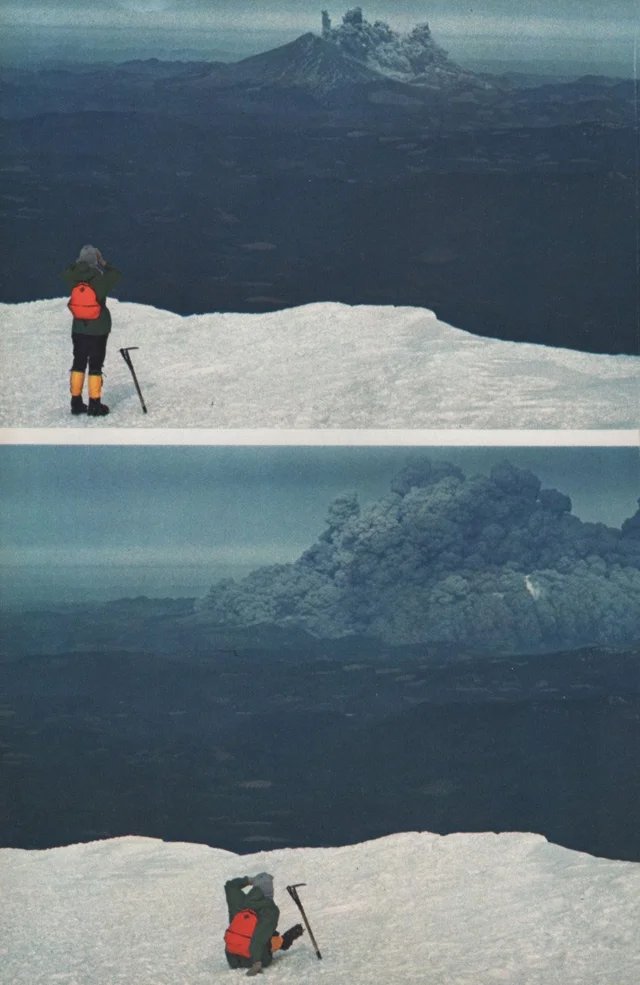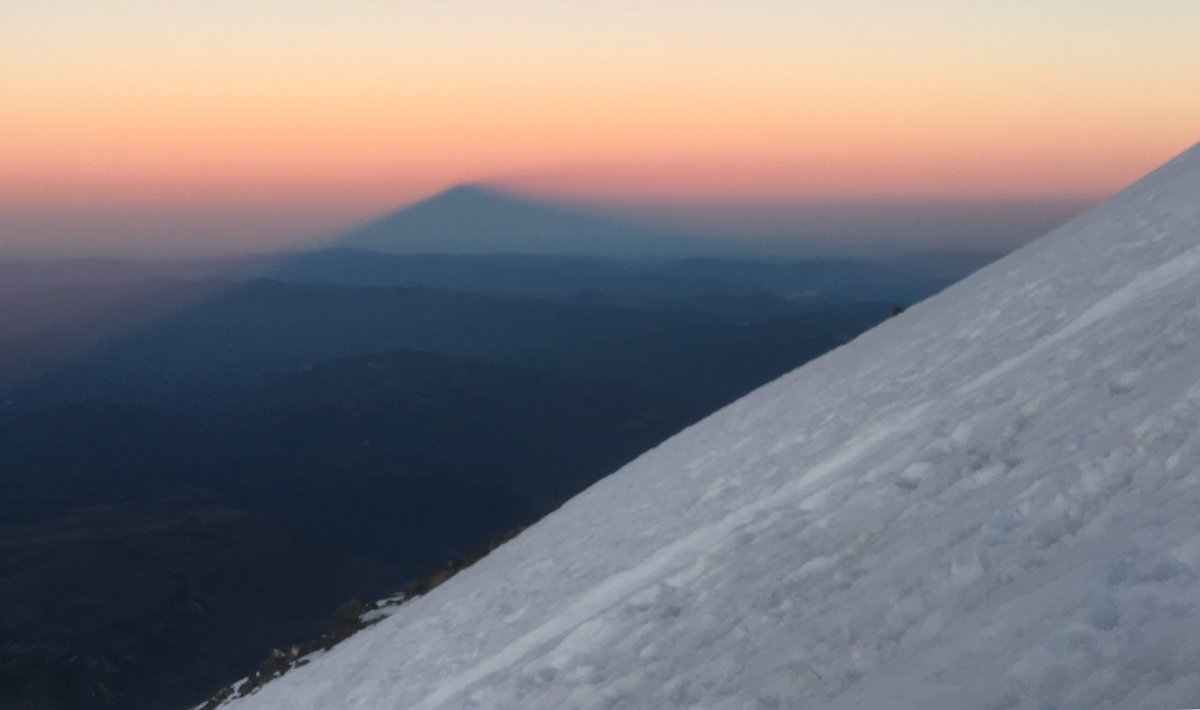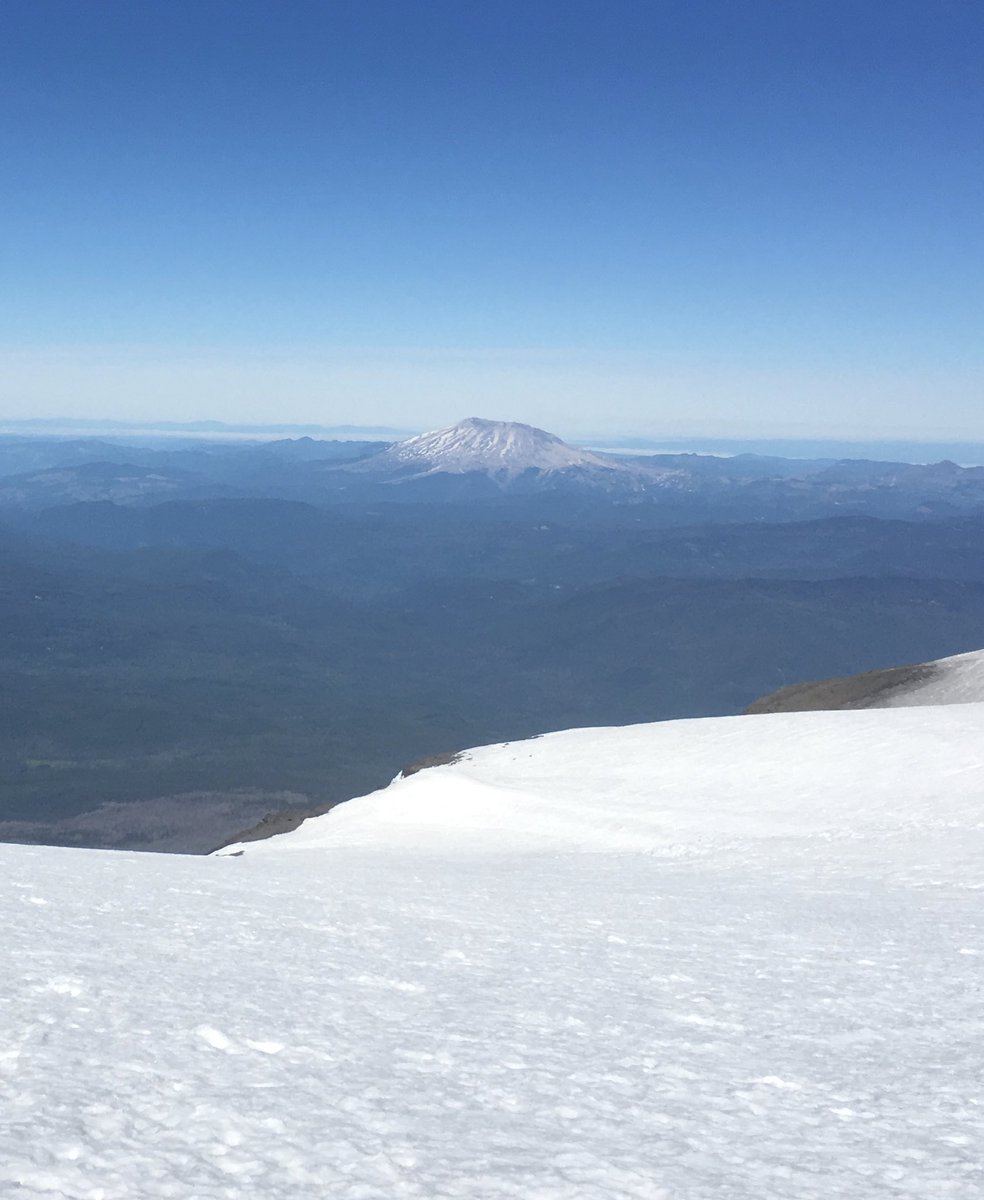This picture of a mountaineer on the Adams summit is the best photo of the Mount St. Helens eruption, bar none.
I think about it all the time - especially this time of year, when I& #39;m usually climbing both mountains.
Imagine it...
I think about it all the time - especially this time of year, when I& #39;m usually climbing both mountains.
Imagine it...
You& #39;ve been pushing up the slopes of this volcano since long before the sun came up. You might have even started the previous day, and slept on a lava flow a little over two miles from the summit. Either way, your day started in the dark, cold and wind chapping your skin.
You have to start early: you want to make the top before the snow gets soft and the slog gets harder. The last two miles to the top are the worst. The ground is ice, and you kick your crampons in with each step. Each step higher means heavier winds, biting cold.
You might be in amazing shape, but by the time you reach the top of Mount Adams, you FEEL it. Your legs are rubber, but you can& #39;t tell if that& #39;s adrenaline or exhaustion. You are elated, even if you& #39;ve done this climb before, because there& #39;s no rush like knowing you& #39;re at the top
You look west, at a mountain you& #39;ve probably climbed dozens of times. But you haven& #39;t climbed it this year, because the mountain has been rumbling and shaking and throwing off clouds of steam and ash.
It& #39;s erupted hundreds of times since early March. Through most of April, there was one explosion every day. And then on April 22, the mountain fell silent.
In mid-may, shaking started again. A bulge formed on the mountain.
In mid-may, shaking started again. A bulge formed on the mountain.
You knew there was a chance you& #39;d seen some action, but you didn& #39;t know it would look like this.
And then, while you watch it smoke and rumble, there is an blast - and then an earthquake -- and then the *entire mountain explodes.*
And then, while you watch it smoke and rumble, there is an blast - and then an earthquake -- and then the *entire mountain explodes.*
As you watch the lateral blast tear this familiar mountain to shreds and rip north across the landscape, flattening trees and destroying everything in it& #39;s path, your legs give out.
This time, you know it& #39;s not exhaustion.
This time, you know it& #39;s not exhaustion.
A few hours ago, you were climbing through the sunrise, watching the world slowly wake up from the quietest possible vantage point.
The whole way, the St. Helens was there, a sentinel off to the left as you climbed.
The whole way, the St. Helens was there, a sentinel off to the left as you climbed.
The landscape of the northwest has changed forever, and you watched it happen.
This is what Mount St. Helens looks like from the Mount Adams summit today.
This is what Mount St. Helens looks like from the Mount Adams summit today.
IIRC, this picture was taken by an incredibly well-timed National Geographic photographer. But I cannot, for the life of me, find the original image or the article that went with it - it might be behind a Nat Geo paywall. So if anyone knows who to attribute/where to link, plz lmk
Could you even IMAGINE downclimbing after that??
I& #39;d be so grateful that there& #39;s enough snow to glissade because there& #39;s no way my legs are functioning after seeing that eruption. https://twitter.com/mattieuMattieu/status/1262429066054889472?s=20">https://twitter.com/mattieuMa...
I& #39;d be so grateful that there& #39;s enough snow to glissade because there& #39;s no way my legs are functioning after seeing that eruption. https://twitter.com/mattieuMattieu/status/1262429066054889472?s=20">https://twitter.com/mattieuMa...
UPDATE: The photo was taken by John "Jack" V. Christianson, and was first published in National Geographic.
I don& #39;t have a soundcloud, but if you& #39;re looking for some AMAZING Mount St. Helens content, you should watch this incredibly delightful, wholesome segment on the annual MSH mother& #39;s day climb, and the boundary-pushing woman it honors. https://www.youtube.com/watch?v=xz5yH_L8m4g">https://www.youtube.com/watch...
and follow @OPB on YouTube. You have no idea how many incredible segments the Oregon Field Guide team has produced on Mount St. Helens over the years -- some featuring rapid-forming glaciers and gripping mountain rescues.
And donate to your local npr/pbs member station!
And donate to your local npr/pbs member station!

 Read on Twitter
Read on Twitter




